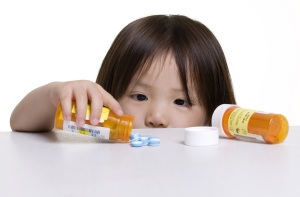 (BPT) – It’s a serious problem with a simple solution. Nearly 1 million children under the age of 5 are exposed to potentially poisonous medicines and household chemicals, according to the Centers for Disease Control and Prevention (CDC). There is no better time than now to learn more about preventing accidental and unintentional poisonings.
(BPT) – It’s a serious problem with a simple solution. Nearly 1 million children under the age of 5 are exposed to potentially poisonous medicines and household chemicals, according to the Centers for Disease Control and Prevention (CDC). There is no better time than now to learn more about preventing accidental and unintentional poisonings.
“Parents know to keep household cleaners and other chemicals out of a child’s reach, but in my experience as a pharmacist, I’ve seen that they don’t always think about prescriptions, over-the-counter medications and vitamins,” says Paul Reyes, Express Scripts pharmacist and host of Ask the Pharmacist radio series.
The CDC reports that more than 60,000 young children end up in the emergency room each year from wrongly ingesting medicines; but it’s not only parents who need to be aware of the risks. Many of these incidents occur outside of the child’s home. In fact, in 23 percent of the cases in which a child under 5 mistakenly ingests an oral prescription drug, the medication belonged to someone who did not live with the child.
“Medications can keep us healthy, but can be extremely dangerous if taken by the wrong person or in the wrong amount,” says Reyes. “Add in a child’s insatiable curiosity, and you have the ingredients for a very serious and dangerous situation.”
Reyes offers these tips for preventing accidental and unintentional poisonings, and what to do if you suspect your child or teen has ingested a potentially poisonous substance:
* Be cautious of colors: Medications are colorful and attractive to children, and can be mistaken for candy. For example, Tums look like SweeTarts, and Advil and Ecotrin resemble Skittles or M&M’s. Parents should not encourage children to take their medicine by comparing it to candy, as this may lead to improper use.
* Lock it up: Don’t leave your next dose out on the counter where a child can reach it. Lock up all medicines and vitamins in a cool, dry place. Tightly secure caps and keep medicines in their original labeled containers so if there is an emergency, you can tell medical personnel exactly what the child ingested.
* When not to share: Be sure to remind children that they should never share their medication. When playing “doctor,” friends and younger siblings of those taking a medication are often the recipients; this can lead to accidental poisoning.
* Know your numbers: If the child has collapsed or is not breathing, dial 911 immediately. If the child is awake and alert, call the Poison Hotline at 800-222-1222 and follow the operator’s instructions. If possible, have available the victim’s age and weight, the container or bottle of the poison, the time of the poison exposure and the address where the poisoning occurred.
* Know the signs: Reactions to ingested medications or household products may vary. Look for signs such as vomiting, drowsiness and any residue odor in the child’s mouth and teeth. But know that some products cause no immediate symptoms, so if you suspect that your child has ingested a potentially hazardous substance, call the poison hotline immediately.
* Keep calm: It’s important to remain calm so you can effectively communicate with emergency personnel. If the child ingested medicine, do not give anything to the child by mouth until advised by the poison control center. If chemicals or household products have been swallowed, call the poison control center immediately or follow the first aid instructions on the label.
For more information and additional tips on preventing prescription drug abuse at home, visit lab.express-scripts.com.



